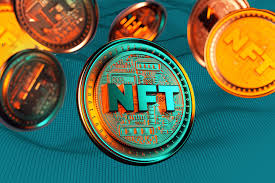
Cryptocurrency exchange-traded funds (ETFs) track the price performance of cryptocurrencies by investing in a portfolio linked to their instruments. Like other such funds, crypto ETFs trade on regular stock exchanges, and investors can hold them in their standard brokerage accounts.
A growing roster of ETFs—a type of exchange-traded product (ETP)—in early 2024 began offering investors the chance to invest in bitcoin through their holdings. After about a decade of regulatory wrangling, the U.S. Securities and Exchange Commission (SEC), under pressure from a 2023 D.C. Circuit U.S. Court of Appeals ruling, authorized the first spot crypto ETFs in early 2024
These investments allow retail traders to gain direct exposure to crypto prices without owning the assets directly. This makes it possible to speculate on cryptocurrency prices without doing business on a crypto exchange or dealing with the costs and complexities of directly owning digital assets.
With more and more people trading with this digital
However, crypto ETFs generally have higher fees than other ETFs, and while the funds themselves are regulated, there is no such oversight in the crypto markets where the funds are invested. For example, the SEC has argued that without proper oversight and surveillance-sharing agreements with regulated markets, it’s difficult to prevent fraudulent activities and ensure fair trading practices in the crypto markets.


.Below, we take you through how these funds work, what worries the SEC still has around these products, what benefits they might have, and what this all means for everyday investors..
KEY TAKE AWAYS
Cryptocurrency exchange-traded funds (ETFs) offer a way to gain exposure to cryptocurrencies without buying and storing the digital assets yourself.
These funds track cryptocurrency prices by investing in futures contracts rather than cryptocurrency itself
Spot ETFs, which invest directly in cryptocurrency, face greater regulatory hurdles due to U.S. Securities and Exchange Commission (SEC) concerns about investor risk
The ProShares Bitcoin ETF, the first and largest U.S. cryptocurrency futures ETF, started trading in October 2021.
The SEC approved the first 11 spot cryptocurrency ETFs for the U.S. market in January 2024.
How Does a Cryptocurrency ETF Work?
While most ETFs replicate how indexes work by holding a basket of underlying assets, crypto ETFs have a couple of ways of tracking the performance of a digital currency. Spot ETFs directly hold the cryptocurrency, building a portfolio that replicates the performance of the digital assets it contains. Other crypto ETFs invest in futures contracts, which are agreements to buy or sell crypto at a preset date and price.















Related post